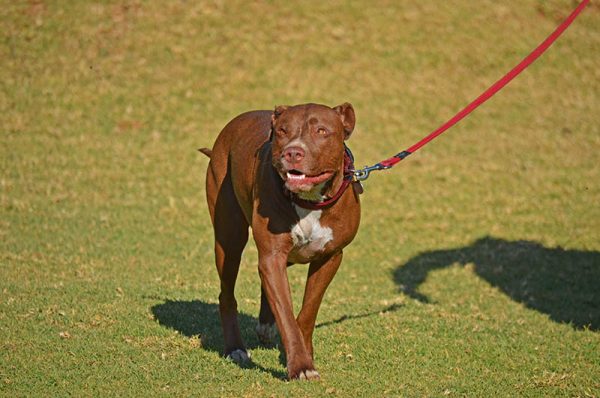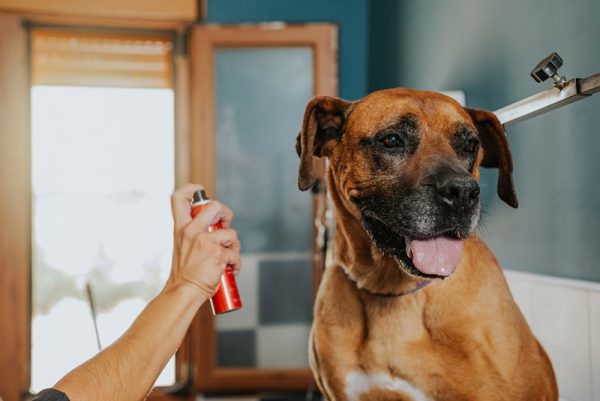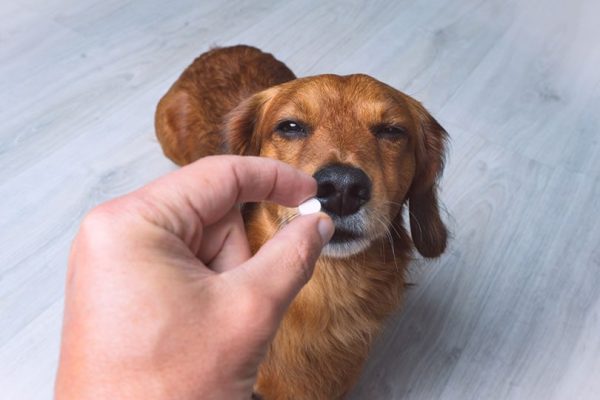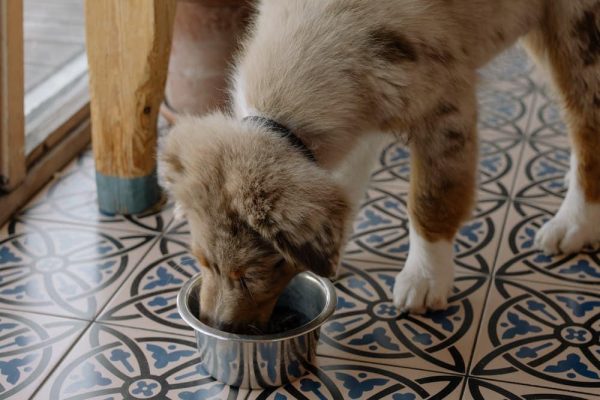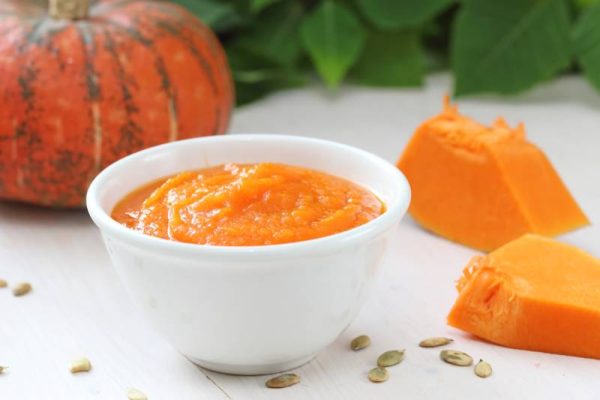In this article
View 3 More +Recently, there has been an increase in the number of Merle Cockapoos available for adoption. These dogs have a very interesting coloration that many dog owners are drawn to. However, everything isn’t as it seems with this breed.
Neither Cocker Spaniels nor Poodles (the two breeds that make a Cockapoo) come in a merle coloration. Therefore, a Cockapoo can’t come in a merle coloration, either. There are very few breeds that do come with a merle coat, and it often isn’t very common within these breeds, either.
There are several different ways the merle Cockapoo may appear. While a mutation can lead to a puppy suddenly becoming a merle, this is extremely rare. Instead, it is more likely that Merle Cockapoos aren’t Cockapoos at all. Instead, they are likely the result of another dog mixed in with the breed to bring about the merle coloration.
Shelties, collies, or the Australian Shepherd were likely used to bring about this merle gene. Likely, this was done to increase the “rarity” of the puppies and make them worth more money.
To completely understand how this merle coloration came to be and why they likely aren’t Cockapoos, let’s look at the Cockapoo’s history.

What is the Merle Gene?
The merle coloration is a particular kind of pattern found in certain breeds. However, how this coloration comes about is a bit more complicated than others. This coloration is known under several different names. For instance, you’ll hear it referred to as “dappled” or “harlequin” in certain cases.
The merle color pattern is the result of a particular gene that affects the formation of melanocytes which produce the dark pigment, melanin. This alters how coat color is expressed, with areas of full pigment interspersed with varying degrees of blocked expression (which appears white). Merle is a dominant genetic characteristic, which means that an individual only needs one copy of the gene (from the mother or father) to create the merle coat.
If two merle dogs are mated, they may produce a ‘double merle’ puppy, which has two copies of the merle gene. These dogs are predominantly white, and the more severe disruption of pre-melanocytes during embryo development can affect other pigmented cells in the body, particularly those in the eye and inner ear. This often results in several congenital health problems, including hearing loss and blindness.
Due to these health problems, two merle dogs should not be mated. However, some dogs carry a merle mutation known as ‘cryptic merle’, which means they can have a non-merle coat, but still pass on the merle gene. For this reason, genetic testing of breeds that carry the merle trait is always recommended before breeding.
There are a few select breeds that are known to display this coloration sometimes. For instance, Border Collies, Shetland Sheepdogs, Rough Collies, Miniature American Shepherds, Australian Shepherds, Great Danes, and Dachshunds can all inherit this gene. However, neither the Cocker Spaniel nor the Poodle has this gene.
So, how do we end up with a merle Cockapoo?
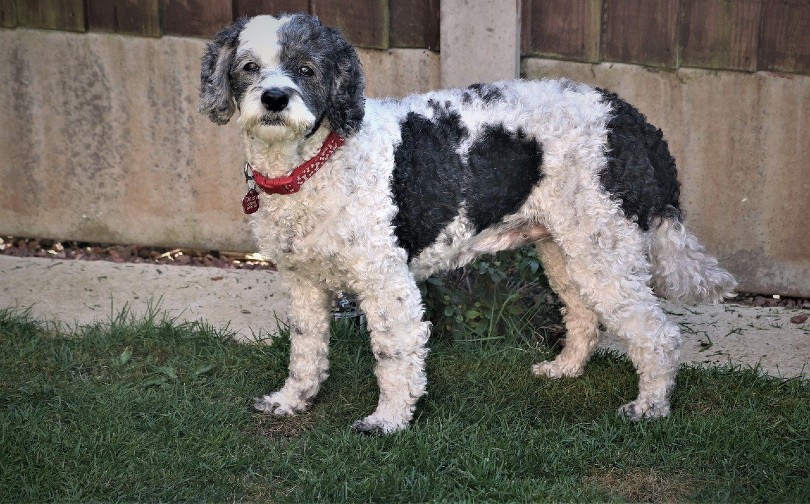
Can Cockapoos Have the Merle Gene?
A true Cockapoo cannot have the Merle gene. While there is a chance that this gene may appear randomly through mutation, this would be extremely rare. Therefore, the only way to make a merle Cockapoo is to mix the dog with something else too. Often, collies and similar dogs are utilized. However, this would mean we are not really talking about a Cockapoo, but a more generic mixed breed.
It is also possible that Cockapoos that are advertised as being merle actually just have a bicolor (known as parti) or roan pigmentation pattern, which has a base color with lots of white hairs and patches. It is important to do your research so you know what you are – or aren’t – getting for your money! Even more importantly, it’s necessary to do this to know if your dog is at risk of problems with their hearing or sight.

Top 3 Unique Facts About the Merle Cockapoo
1. True Merle Cockapoos Likely Don’t Exist
A random mutation can cause the merle gene. However, this is likely very rare. Instead, it is more likely that another breed was mixed in with the Cockapoo to cause this coloration, or we are just seeing a parti or roan Cockapoo.
2. Merle Cockapoos May Have Health Problems
Any genetic combination that is particularly rare has a higher risk of also inheriting health issues, as they have been bred from a more limited gene pool. In the case of merle dogs, this could have serious consequences for their hearing and vision.
3. They Are Expensive
Because of their rarity, these dogs are quite expensive. Therefore, you have to plan on putting quite a bit of money down. However, you should be sure you know what you are actually paying for because if you are truly looking at a merle coat, it is far more likely you are not just dealing with a Cocker Spaniel Poodle mix. Alternatively, you may be buying a roan puppy with an inflated price tag!

Are Merle Cockapoos Good Family Dogs?
Cockapoos are generally regarded to be playful, and eager to please. Their low-shedding coats mean they are also a good option for people with allergies. They have a bit of a reputation for being naughty, but this is likely due to the misconception that they are easy to train and an ideal breed for inexperienced dog owners. While the Cockapoo is good with children and other pets, they still need firm, consistent training and clear boundaries.
While these dogs can be good family pets, there are certain considerations to take into account before purchasing one:
- These dogs are likely a mix between a Cockapoo and another breed. Therefore, you don’t really know what you’re getting when you purchase one.
- Often, these dogs are quite expensive due to their perceived “rarity.” However, you may not be getting exactly what you’re paying for.

Summary
The Cockapoo can be a loving, playful, and wonderful family pet, but if you’ve got your heart set on a merle coat, there are a few things to keep in mind. For instance, the merle gene doesn’t exist in either Poodles or Cockapoos. Therefore, these dogs must be mixed with something else to cause the gene to be introduced into the breed. The other possibility is that what you are seeing is a parti or roan Cockapoo.
Furthermore, the merle gene can result in several health issues, most notably affecting hearing and sight. If you’re not sure that your puppy is a true merle, or even a true Cockapoo, there are a number of DNA tests that can help identify your dog’s breed, as well as test for the merle gene.
It always pays to do your due diligence before committing to a new pet. It can be easy to fall in love with a particular coat color or pattern, but make sure you know exactly what you’re getting before you hand over a large sum!
Featured Image Credit: Noviceshooter98, Shutterstock





